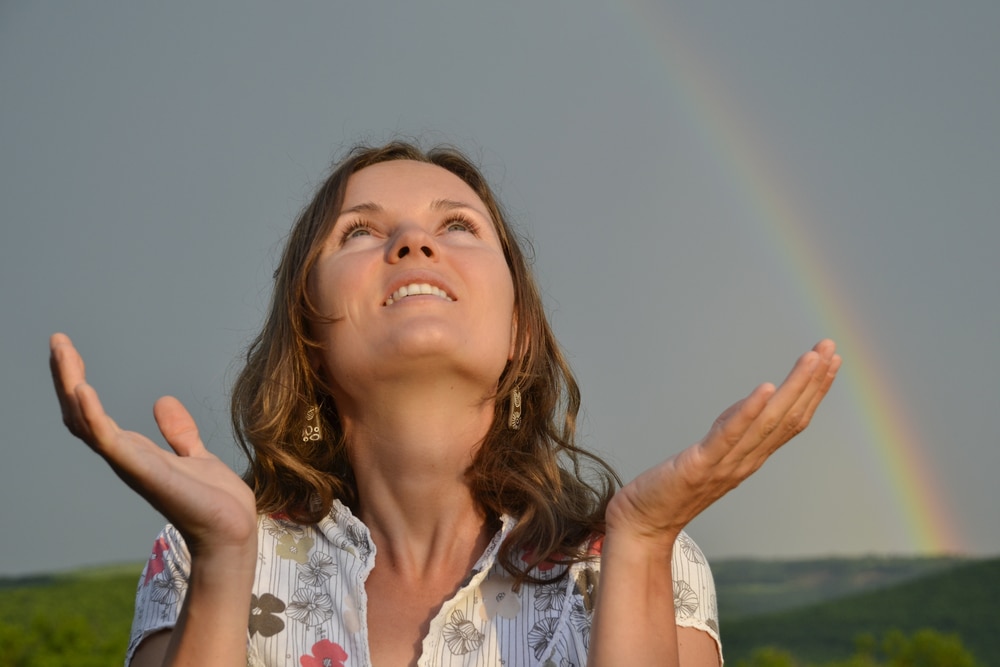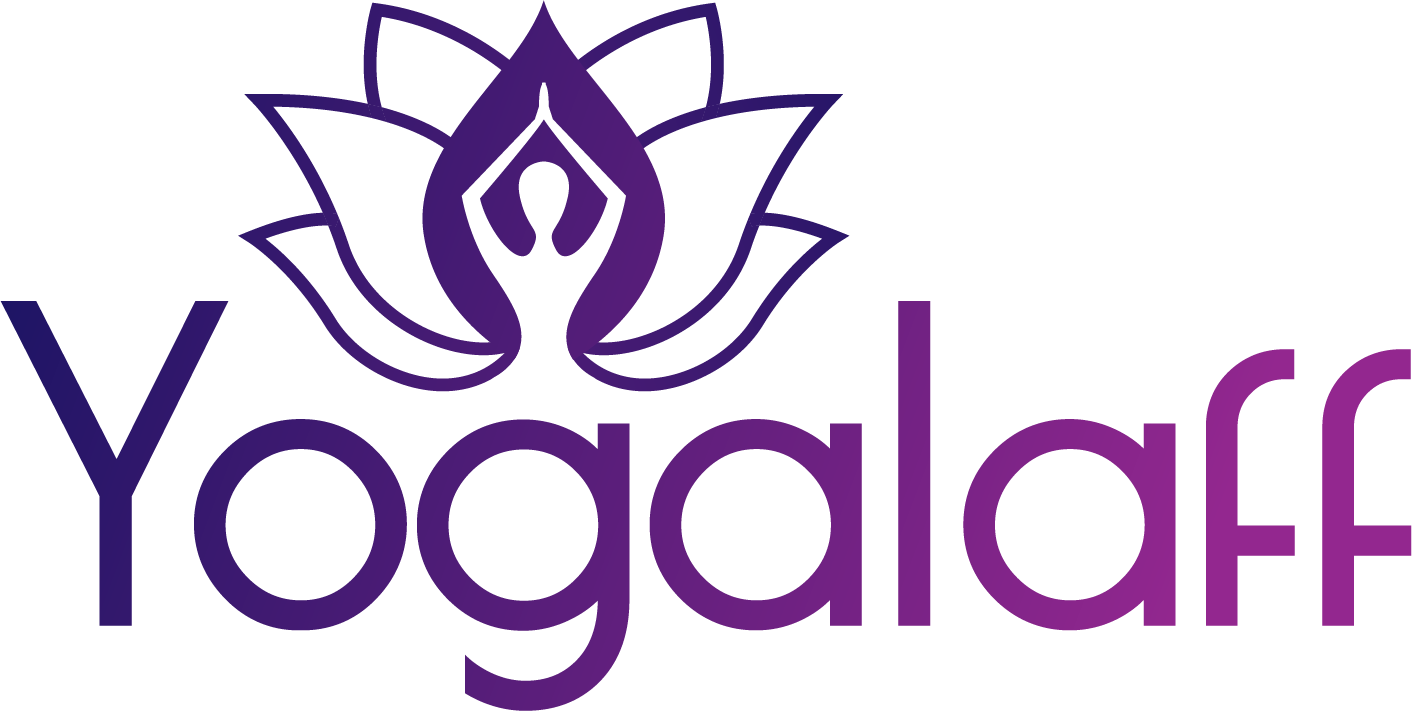“If the only prayer you said was thank you, that would be enough.” ~ Meister Eckhart
“Piglet noticed that even though he had a very small heart, it could hold a rather large amount of gratitude.” ~ A.A. Milne, Winnie-the-Pooh
Most of us meditate because it deepens our feelings of well-being, and it’s true that meditating for only ten or fifteen minutes a day can have tremendous effects.
People often notice a fuller sense of inner-stability after only a few weeks of having a daily practice. This is a wonderful thing.
This article outlines a simple technique for fostering feelings of gratitude. You can either approach it as a true gratitude meditation, as in the first example, or as a more active exercise, as in the second example.
My suggestion is to do what best suits you.
What Is Gratitude Meditation?
 Gratitude meditation is a practice by which people focus on considering the things that they have to be grateful for in their life.
Gratitude meditation is a practice by which people focus on considering the things that they have to be grateful for in their life.
Each day, Buddhist monks will engage in a chant of gratitude and reflect on the blessings they have in their lives.
Native Americans also follow a similar ceremony, beginning with grateful prayers to the father sky and mother earth, and to the four directions, as well as the animal, minerals and plant brothers and sisters that we all share the earth with and that support our lives.
Tibetan monks and nuns will also offer prayers of gratitude for the suffering that has been given to them.
As you can see, gratitude meditation is not new, and it is not reserved for just one particular religious movement or spiritual belief system.
Many of us may think of meditation as a practice where one sits in darkness and focuses on clearing their mind. Gratitude meditation is somewhat different, and it can be practiced in many different settings.
It is something that can be done in a short time space, for example, while waiting for a morning coffee to brew.
Gratitude meditation is a simple way to meditate. All you need to do is spend a moment to reflect on the things and people that make you grateful.
Gratitude is not merely about being thankful for positive things. It is about being grateful for everything.
There may be things in your life that right now seem bad, but if you reflect upon them, you will see that they provide an opportunity for you to learn and grow. An important part of gratitude is being able to recognize those blessings.
One way to practice gratitude meditation is to keep a journal. In this journal, write down the things that make you feel grateful, and write letters to the people that you are thankful to have in your life.
Everyone does not use gratitude journals, but they can be a useful tool if you want to stay grateful throughout each day, and not lose sight of the things that are important.
Why Practice Gratitude Meditation?

Gratitude meditation is something that many religions and belief systems include in their start of day ceremonies, but you do not have to hold a spiritual belief to try it, and there are many benefits to starting your day with a few moments focusing on gratitude.
One study by Rao from 2016 into the benefits of meditation in general, found that meditation can help to increase feelings of gratitude as well as wellbeing, self-compassion, and confidence.
While it may seem obvious that gratitude meditation can help to increase gratitude, it’s essential for healthcare professionals to study and document such effects before recommending the practice.
The study is particularly interesting because the practitioners were simply given some basic training in meditation practices online, and they immediately saw results.
Many of us appreciate that it is useful to focus on the things that make us grateful, but an active practice of feeling gratitude is not common in day to day life.
This is important because gratitude meditation is something that increases our feelings of gratitude, and amplifies the benefits that gratitude produces.
Benefits of Gratitude Meditation
- Research has found that people who practice gratitude meditation regularly have lower blood pressure, better immunity, and a generally improved mood.
- One of the easiest ways to feel happier is to direct your attention to the good things in your life. Equally, shining a positive light on bad or neutral things changes how you feel about them. When you’re caught in a cycle of despair you can easily step out of it by consciously calling to mind all that is positive and life-firming in the situation that is causing you frustration.
These benefits were found to manifest themselves even after a relatively brief period of gratitude centered meditation. Even practicing gratitude for short bursts can help to improve a person’s overall well-being.
Gratitude is a protective factor for some people and can help to produce positive outcomes following traumatic experiences. It has been used to help people recover from substance abuse, as well as from traumatic events such as destructive earthquakes or campus shootings.
One study looked at the lifestyles of African-Americal adolescents and found that those who practiced gratitude benefited from its protective factors when it comes to a number of different aspects of adolescence, including showing increased levels of academic interest, performance, and engagement.
Higher gratitude was also reported to help to reduce levels of drug use, as well as lower instances of sexual behavior in those in the lower adolescent age group.
In a study into suicidal thoughts published by Kleiman in 2013, and the 2016 Stockton study that looked into humor, gratitude, and the prevalence of suicide and suicidal thoughts, high levels of gratitude have been associated with lower instances of suicide.
This shows the importance of practicing gratitude in general, and also shows the potential value of gratitude as an intervention strategy in those who are suffering from depression or suicidal thoughts.
The benefits of gratitude meditation are extensive.
One study from 2015 by O’Leary, found that practicing meditation and gratitude on a regular basis (four times a week for three weeks, while keeping a diary) helped to reduce levels of stress and depression, as well as to increase reported feelings of happiness in the study’s participants.
It is possible for anyone to add this kind of intervention to their life, with minimal effort and almost zero cost. This means that the idea of gratitude meditation is incredibly promising as an intervention.
The schedule used in the study is one that it would be possible to incorporate into prisons, schools and other institutions, and potentially even apply in a workplace or in a hospital to offer benefits to employees and patients.
When you take these findings together, it becomes clear that gratitude meditation is something that has near-immediate benefits.
It has the potential to significantly boost a person’s wellbeing, as well as serve as a protective factor against destructive and risky behaviors, and to increase mental resilience in the face of stressful or traumatic events.
The study by Rao and Kemper in 2016 shows that it is possible to teach a person how to engage in gratitude meditation quite quickly, and even through remote learning.
This means that anyone, no matter where they are in the world, can learn about gratitude, and can start to use the practices for their own benefit.
How to Practice Gratitude Meditation
If you are interested in trying the practice of gratitude meditation for yourself, then you may find it useful to try guided meditation first.
There are some great videos on the practice, some of which are linked below. The shorter video is an excellent introduction to the idea of gratitude meditation, while the longer video provides a more in-depth introduction, for those who are willing to invest a bit more time into learning.
This short introduction is just under seven minutes long and is by Deepak Chopra.
It focuses on gratitude as well as forgiveness, and it is a good option for people who are new to the idea but want to get a bit of advice before taking their first steps into trying the idea of doing guided meditation at home.
This slightly longer introduction is just over ten minutes in total and walks you through what to do in a session.
Even if you are an absolute beginner, you will get a lot out of it. If you like the video and want to be able to watch it offline, you can download it to save it for later use and viewing.
Finally, there is a 30-minute long video that is ideal for people who want to do a more extended, guided session of gratitude meditation. This session is fully guided, and that makes it quite accessible to people who are new to the world of meditation, and who want to learn about it as they go.
If you know a little about mindfulness and already do some mindful meditation, then you might have noticed that the two practices carry some similarities.
The Guided Gratitude Meditation Script
Note: this reflection is borrowed from Vajragupta’s excellent book, Buddhism: Tools for Living Your Life. Though taken from a Buddhist context it’s a universal practice that is suitable for people of any faith (or none).
One joy scatters a hundred griefs. ~ Chinese Proverb
“Some people grumble that roses have thorns; I am grateful that thorns have roses.” ~ Alphonse Karr, A Tour Round My Garden
The purpose of the meditation is to cultivate an open and gentle feeling of thankfulness for all that is good in your life, for the gift of life itself. Although it can be, much of the anger and frustration we experience isn’t directed on a specific object.
In either case, cultivating gratitude can replace those painful feelings with positive ones.
Go at your own pace and include anything else that comes to mind:
- Settle yourself in a relaxed posture. Take a few deep, calming breaths to relax and center. Let your awareness move to your immediate environment: all the things you can smell, taste, touch, see, hear. Say to yourself: “For this, I am grateful.”
- Next, bring to mind those people in your life to whom you are close: your friends, family, partner…. Say to yourself, “For this, I am grateful.”
- Next, turn your attention onto yourself: you are a unique individual, blessed with imagination, the ability to communicate, to learn from the past and plan for the future, to overcome any pain you may be experiencing. Say to yourself: “For this, I am grateful.”
- Finally, rest in the realization that life is a precious gift. That you have been born into a period of immense prosperity, that you have the gift of health, culture, and access to spiritual teachings. Say to yourself: “For this, I am grateful.”
Another Gratitude Exercise
I started working with a meditation teacher when I was living in London about three years ago. One of the exercises he suggested I do was to make a list, each morning, of all the things for which I was thankful.
It’s an incredible way to start the day. You’ll walk out of the door that morning with a lightness in your step.
It doesn’t need to be an extensive list. You might, for example, only list five things before rushing out to work.
Mine might look like this:
- I am grateful for: the autumn view from my window.
- My health.
- My books and the opportunity to do meaningful work and research.
- The support of my friends and family.
- My bowl of morning muesli.
Mindfulness and Gratitude Meditation
There is a relationship between having a mindful awareness and being able to feel grateful for the various things and people that are a part of your life.
This is something that philosophers and academics have given a lot of thought. Rosenzweig calls gratitude one of the sisters of mindfulness.
For example, suggesting that because gratitude is one of the core tenets of Buddhism, it is an important relative of the practice. To support this assertion, it is highlighted that the Dalai Lama was able to show gratitude even towards the Chinese when they were occupying his nation.
I hope you enjoyed the article! I also hope you’ll make a small space in your life for a regular gratitude practice, there really are so many benefits.
What Exactly is the Relationship between Mindfulness and Gratitude
O’Leary’s 2015 study on the effects of gratitude and mindfulness interventions upon a person’s wellbeing, he compared the two kinds of interventions and noticed that both gratitude and mindfulness produced similar outcomes.
Both practices would produce increased levels of well-being. So it is clear, if nothing else, that both mindfulness and gratitude are useful for improving a person’s well-being, but what else?
In 2016, O’Leary published another study looking at the impact of mindfulness and gratitude on prenatal well-being. Both of these were positively correlated with improving the well-being of pregnant women.
Since meditation is a non-invasive, low impact practice that can be performed anywhere, it is appropriate for a large cross-section of the population, including the elderly, younger people, and pregnant women.
It is also suitable for young men, as a study by Loo in 2014 demonstrated. This study showed that gratitude and mindfulness were both helpful for reducing the prevalence of problem gambling in young men.
The study into pregnancy and the practice of gratitude meditation as well as mindfulness showed some interesting results.
While both methods were beneficial in terms of increasing wellbeing, the exact reported outcomes differed slightly, so it may be that both practices are best when used in conjunction with one another, instead of them being used in isolation.
Buddhists and Native Americans have made gratitude an important part of their day to day lives, and we could benefit a lot from doing the same thing.
The history of mindfulness is long and storied.
Academics such as Emmons and Trousellard have both examined the practice, and put its efficiency to the test with modern research methods that have so far served to back up the things that the Native Americans, Tibetans, and Buddhists already thought that they knew.
The cultural significance of the practice is clear and easy to understand when the benefits are demonstrated in laboratory conditions.
Meditation serves an important role in society, and we can benefit from both gratitude and mindfulness.
The practices are not interchangeable, but they are related in a lot of ways, and they are two practices that can integrate well with each other.
If you already practice mindfulness, try adding some gratitude into your meditation. If you are interested in gratitude, then try starting with some mindful meditation. There is indeed a lot of truth to the idea that mindfulness and gratitude are sisters of each other.


